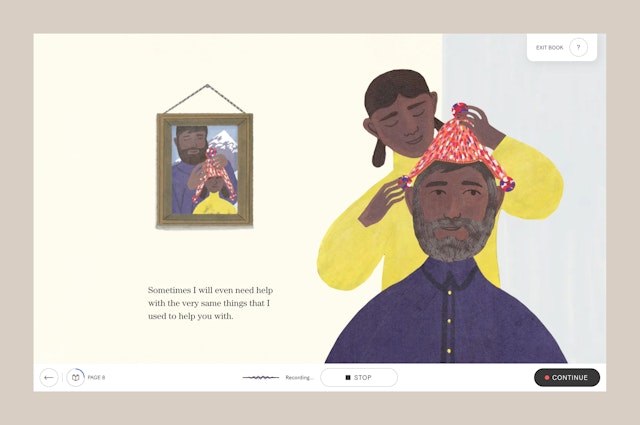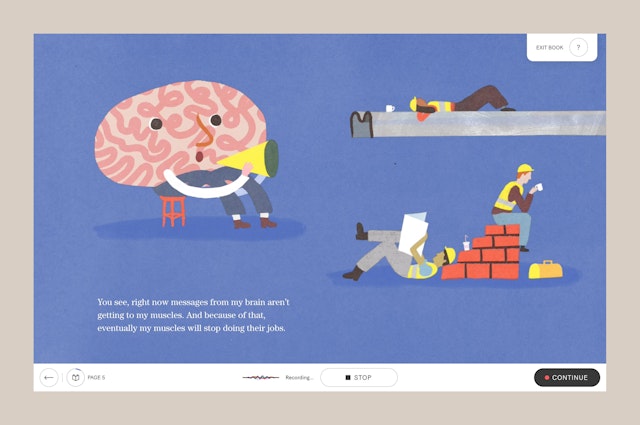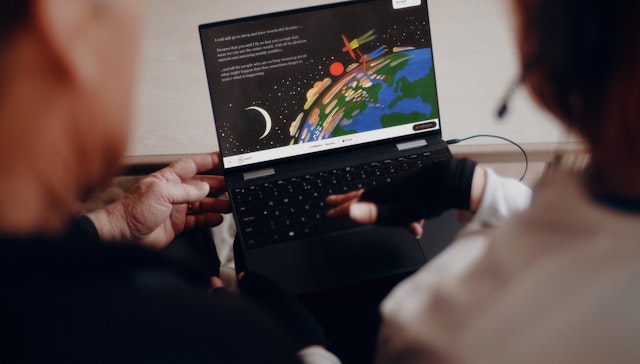The making of ‘I Will Always Be Me’: banking the voices of people with motor neurone disease
‘I Will Always Be Me’ is a first-of-its-kind book for people living with motor neurone disease (MND) that banks their voices as they read aloud. We speak to Dell, Intel and VLMLY&R about how they collaborated on the project for the Motor Neurone Disease Association (MNDA).
Motor neurone disease is a rare condition affecting the brain and nerves. Symptoms can include muscle weakness, twitches and slurred speech, and many with the illness lose their ability to communicate over time, relying on assistive technology as a result. However, these communications aids often rely on people with MND banking their voices in advance of their condition deteriorating.
Inspired by the insight that only 12% of people living with MND actually bank their voices, the brands behind ‘I Will Always Be Me’ wanted to find an accessible way to help people preserve their voices for their families. “Previously, it was a very difficult process,” says John Coyne, vice-president of brand, creative and media of the tech company Intel. “Banking your voice was time consuming, demanding people with MND to say up to 1,600 random phrases, which not only takes hours but can be very emotionally taxing too.”
By contrast, ‘I Will Always Be Me’ takes just half an hour to read and record. Once completed, the recording can be uploaded and transformed into a digital voice by voice banking technology SpeakUnique to then be used with communication devices as needed.
VMLY&R’s global chief creative officer on the Intel account is Allison Pierce. She says the issue with previous voice banking systems is that they removed a lot of personality from the speaker’s voice. “So often they can feel robotic. Through reading this story, however, the recording is capturing their voices in a way that not only feels more human but is more personal to them.”

The story within the book is also from the perspective of someone living with MND and explains what they will be going through in a thoughtful, informative way. However, the team says one of the hardest tasks of the project was deciding who should write the script.
VMLY&R chief creative officer Wayne Best says that ”finding the right author was crucial,” and tells how the team eventually settled on New York Times bestseller Jill Twiss. “She collaborated with the team at MNDA to work with a speech and language therapist, then in addition to the inputs from the teams at Dell and Intel she was able to boil it down to: what were the things important to share with family? What are their experiences? And how do we share that in a way that feels personal, but also gives us all the sounds and syllables we need to bank?”

The team also found it challenging to strike the right tone with the book – making it accessible to all ages was crucial to ensuring its universality.
When they first began the project, says Pierce, it was conceived as a children’s book, helping people with MND explain what was happening to young children.
“As we went on, however, we realized that many people affected by MND may not have young children and might even struggle to talk to their spouse or adult children, so it became a story for all ages.”
They also had to strike a balance between ensuring the text got the right message across while not detracting from the ultimate goal of recording their voices. “It was naturally going to be emotional due to the subject matter, but it couldn’t be too emotional as we still needed to rely on people being able to bank their voice.”
When it came to making the campaign, the team was faced with further challenges due to the surge of cases of the Omicron variant. “We were due to film with five families across the UK when cases spiked,” says Coyne. “And these are compromised people, so we had to be extremely careful, but everyone was incredibly generous and allowed us to come and film in a way that would keep them safe.”
The team was spurred on to complete the project for Stuart Moss, head of IT innovation at Rolls Royce, whose father Brian Moss died of MND in 2014. ‘I Will Always Be Me’ is dedicated to his memory.

Ultimately, says Coyne, the goal of the campaign is to ensure more people bank their voices for future generations. “We want to see an uptick of 500 people with MND bank their voices in the UK alone. That’s what we’re really focusing on with this activation.”
Both Coyne from Intel and Liz Matthews, Dell’s senior vice-president of global brand and creative, say that the collaboration between these two brands is a natural result of their shared belief that technology can be utilized to improve people’s lives.
“It was an opportunity to make a real difference,” says Matthews. “Especially in this day and age, the idea that technology can bring people together to make an impact is what motivated everyone to work on this project.”
And it’s abundantly clear that the teams across the brand and agency were passionate about this project. Speaking candidly about how much they enjoyed working together, Coyne says: “It’s just been so rewarding. It’s been one of the most rewarding projects of my career and I’ve been in this industry for longer than I’d care to admit.”

